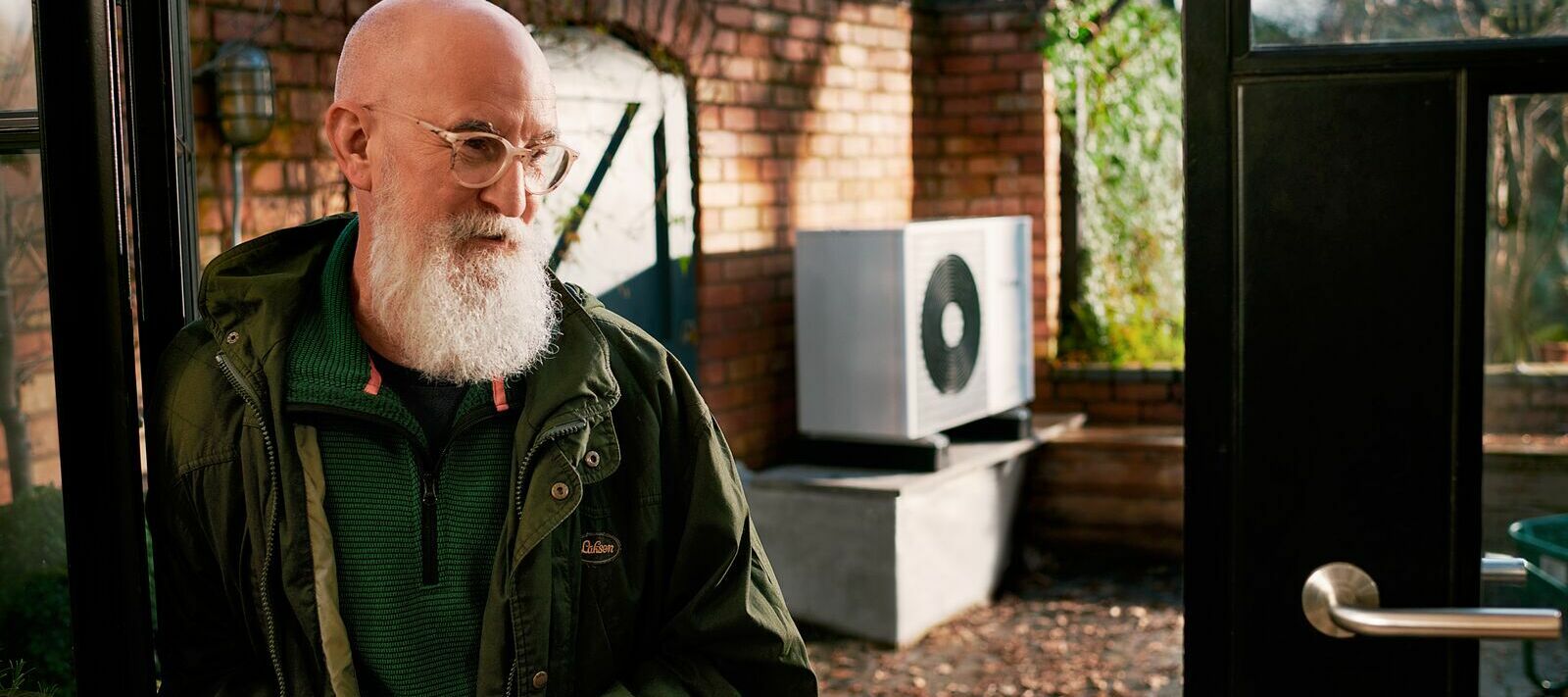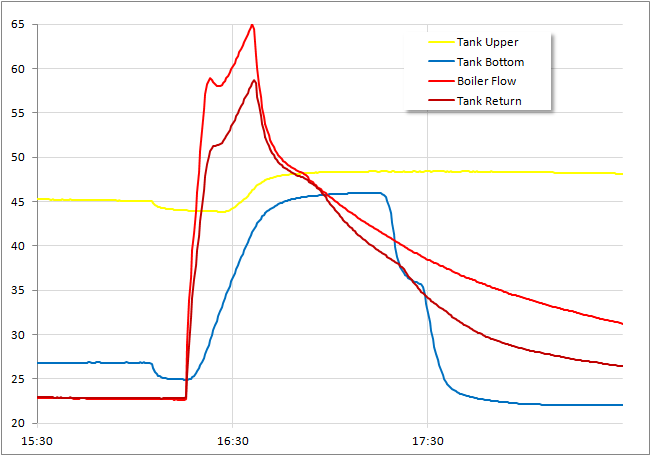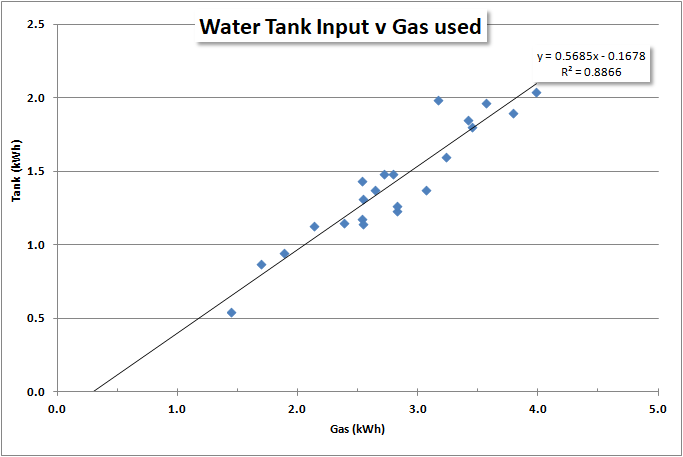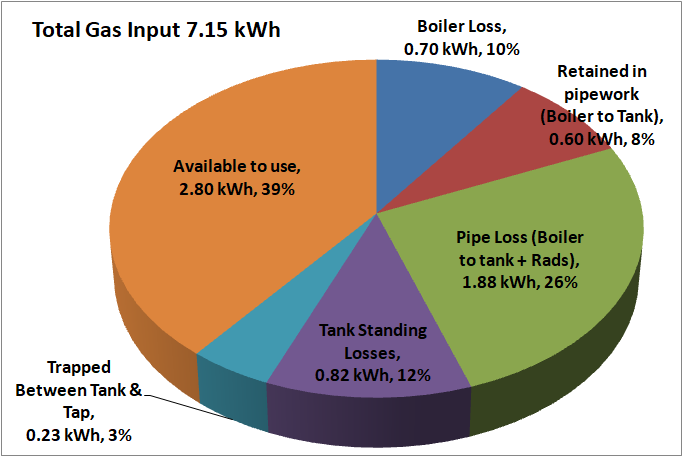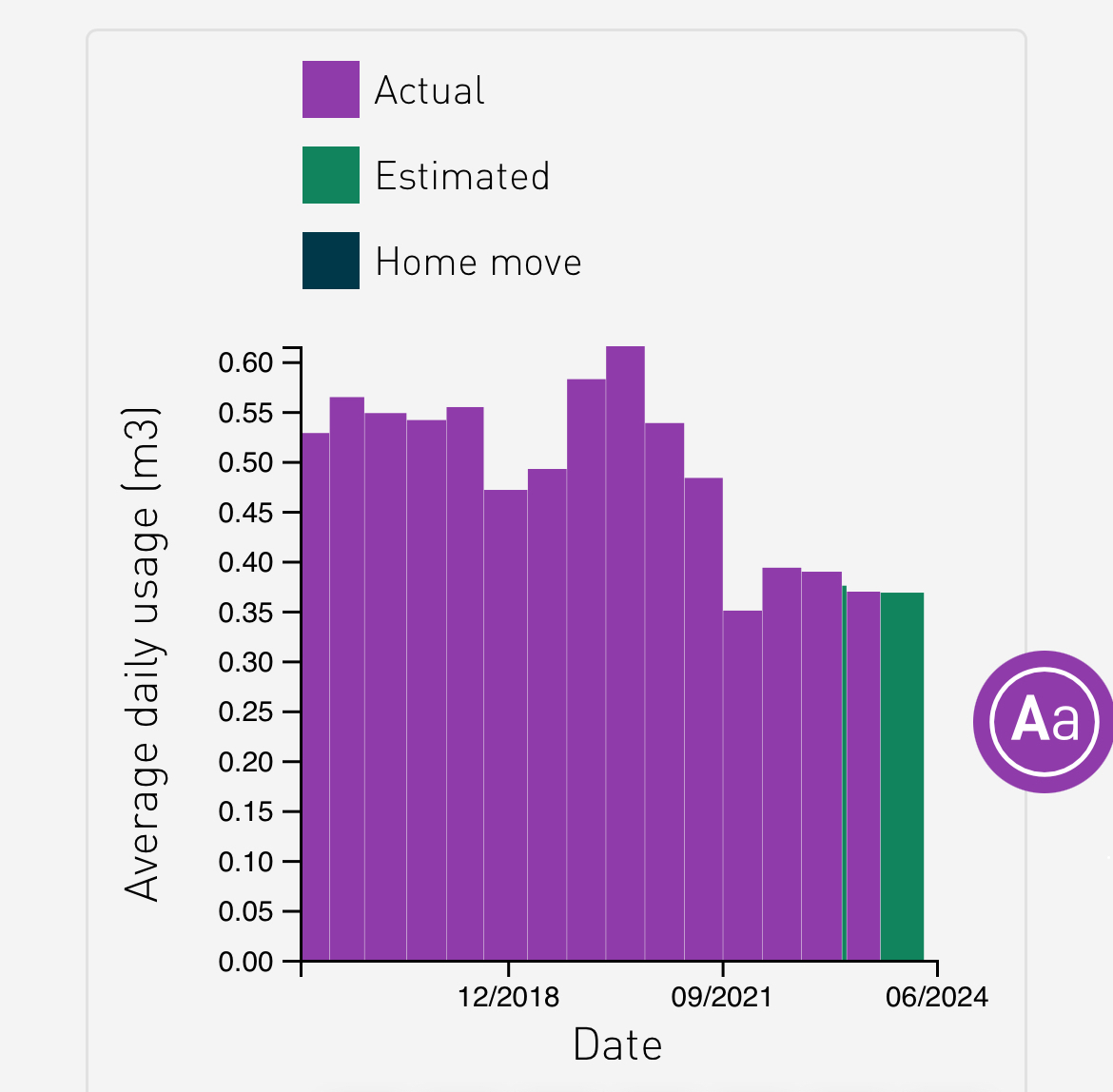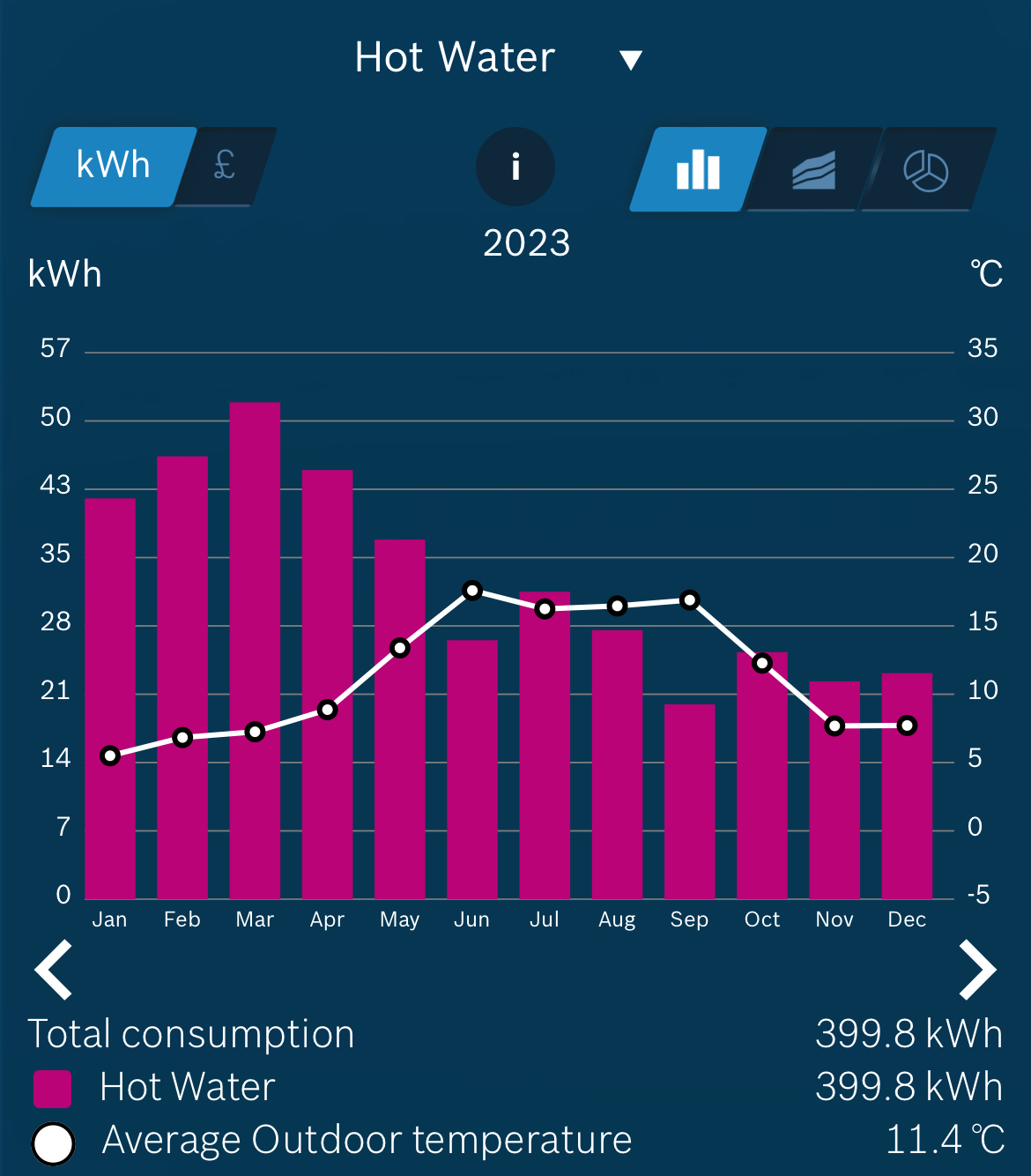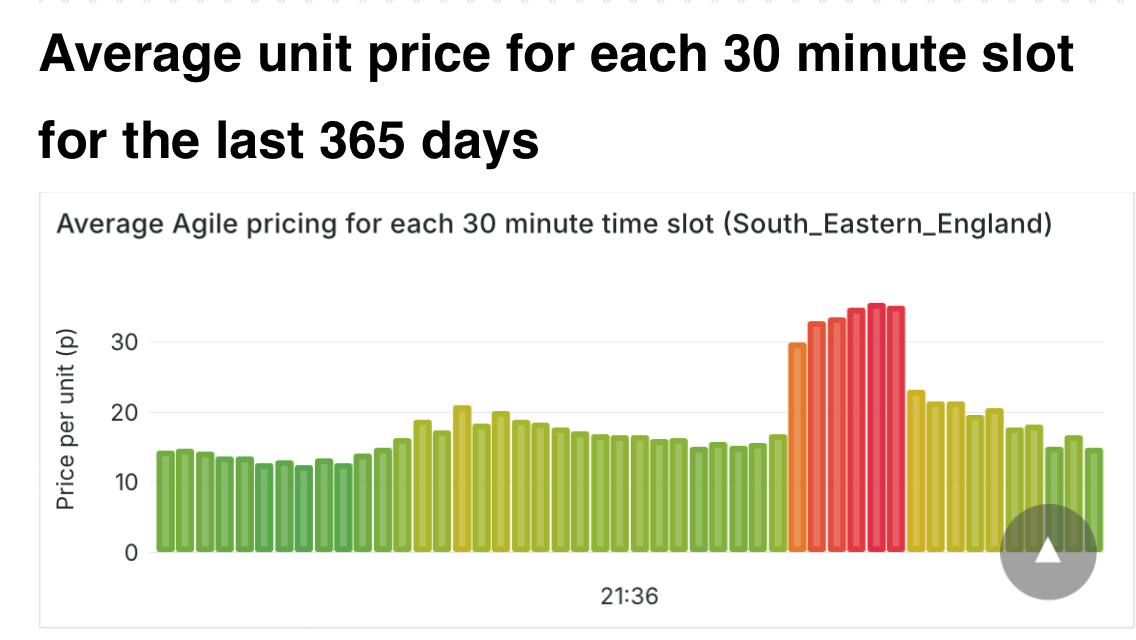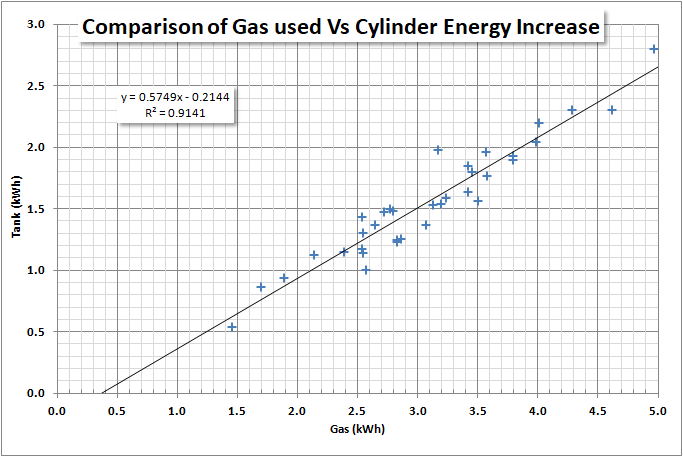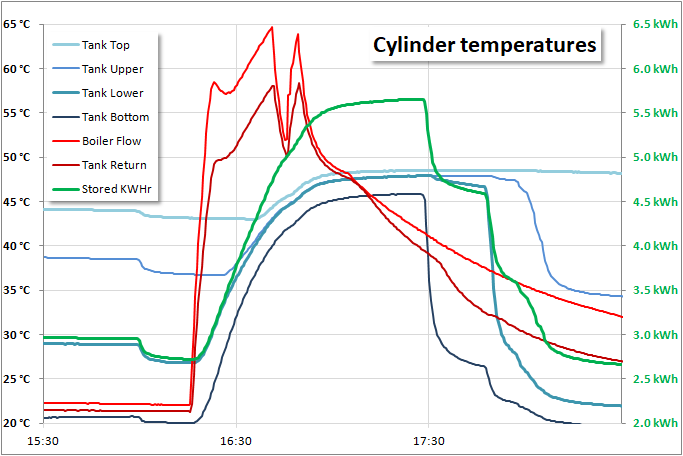Updated on 09/06/25 by Ben_OVO
The earlier parts dealt with the car and the benefits of installing an air-air heat pump (AAHP) and this part deals with the immersion heater which I initially thought would not be viable but you can either have a small cost benefit or trade that for a significant decrease in the gas usage.
An immersion heater is just a heater. It has a COP of 1 which means that you only get out as much heat as what you put in as electrical energy. We could use a heat pump with a COP of 3+ to heat the water in the hot water cylinder but I’m just exploring what the benefits are, if any, of just using an immersion heater as they are relatively cheap to buy. We have a hot water tank (in a system boiler) which is fed by a cistern in the loft and it’s a vented system. The tank heating at the moment takes place with the gas boiler. This is because it is generally too expensive to use electricity to heat water.
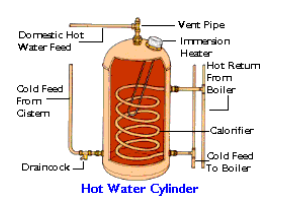
The electricity price per unit can be around 25p on the SVT or Fixed Price contract. Since gas at the same time is about 6p / unit and the boiler efficiency is around 80% this means that heating by gas - what I call the Gas Margin Price (GMP) - is around 6.8p / unit. This is very much lower than the SVT and it isn’t economic to do that if that is the tariff you are on.
** Normally this is 90% with heating but it’s lower with the higher temperature for the tank and also pipe losses even though they are lagged.
Where it gets more interesting is that if you have a ‘wholesale linked’ tariff then the unit price varies throughout the day and can even go negative. This means there are times when electric heating is more economic than gas. You just need to be selective when you use it.

Above is the average Agile price for the first 12 hours of the day over a four month period for 2024 and there is a very persistent pattern. There is a dip in the price between 01:00 and 05:00 hrs where the average price is still above the GMP but not disastrously so. On some days it will be above this and some days below. So it would seem possible that we can take advantage of the lower prices with two simple controls in order to make direct heating viable. But, first, we need to know how much heating we need to do on a daily basis.
My hot water demand amounts to 3.7 kWh a day. With a 3kW heater we can add enough energy to the tank with 3.7/3 = 1.2 hours of heating a day. If we had the timer set to 1.5 hours starting somewhere between 02:00 and 05:00 then this would be more than enough. In addition we can always switch it off on the days when the price is too high.
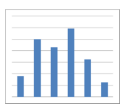
02:00 to 04:30 over a four month period.

Note: there are errors in the depiction of the best slots (four in a day) but it doesn’t affect the results which are calculated differently.
Calculating the total cost versus the maximum unit price
I’ve defined the parameter Gas Margin Price Factor (GMPF) as a means of setting a threshold to enable the tank heating.

As you increase the value up from 0 to 1 the heating and the cost saving increases. With the GMPF greater than 1, the electricity price goes above the GMP of 7.6p (6.1p / 80%), and you start to eat into the savings you have made. With a GMPF above about 2.2 the heating is on every day and you make a loss but you are no longer using gas to heat the water.
The days when we select to have the immersion heater on
So what we have here is not only the ability to save money but if we set the GMPF > 1 we can trade saving money against saving gas. In the plots below the months are horizontal lines, Jan Apr 2004. A red square means the immersion heater needed to be on that day.
GMPF = 1 (on/off threshold = 7.6p) . This maximises the saving at £18 a year. It also saves 250kWh of gas (out of 1800kWh). The negative is that you need to intervene on an almost daily basis. The immersion heater thermostat would be set to the max of 80C as this would allow heat to be carried over to the next day or two when the price might not be so favourable. The savings could be a bit higher because of this. This is the money option.
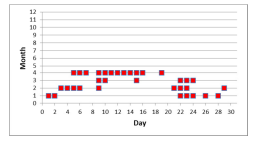
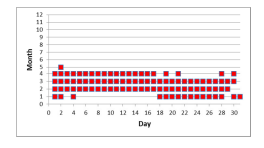
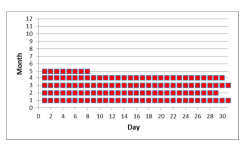
At a glance this looks like the immersion heater is on all the time but the critical point is that it is only powered at various HH slots between 02:00-05:00 every day, controlled by an immersion heater time switch.
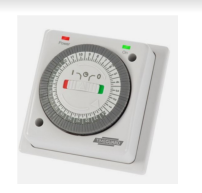
Refining the selection of HH slots

Note: I have no idea why the cheapest HH slots stay more or less the same but it will have a lot to do with a repeating pattern of electricity usage. This could change as more EV owners charge overnight but this will be an evolution rather than a rapid change and EV charging is not the only factor as there is a lot of night storage heating going on in the first four months of the year. I will update the blog with any changes in usage. I could also look to see if this pattern changes in the 2023 data.
Reducing the intervention required
If you change the variable to fixed slots there is a barely perceptible change in the plot. In fact, it is such a small change I’ve had to put both plots next to each other. Some of you might have spotted that the savings plot doesn’t start at zero. This is because there ae negative values in the Agile pricing so rather than complicate the graph with negative values I chose to show the plot starting at a non-zero saving. It’s about £6 and a 100kWh of gas.
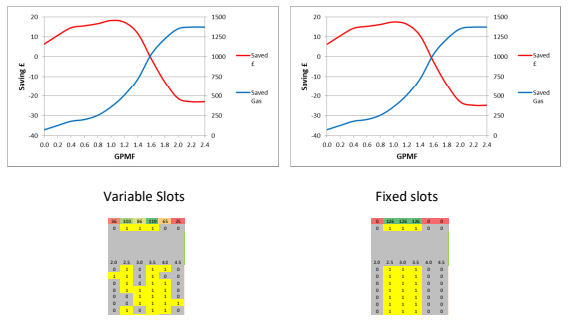
A summary so far
At first sight would seem to be completely uneconomic to use electricity to heat all the hot water we use. For 1800 kWh it would cost £432 on the SVT and £270 on an average Agile price of 15p. This is compared to a gas price of about £110. However, if we use a time switch that comes on every day for the selected minimum-cost times then it works out only about £25 more expensive than gas. There is no regular intervention required but an occasional check can be carried out to ensure the best time slots are still being used. If you want to you can selectively turn the power off on the most expensive days which will save some money as in the previous section.
Saved Gas vs Electricity cost. The GMPF value with the ‘best’ trade-off?
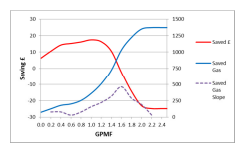
heater on at higher prices you can see this with the blue
line. The dotted grey line shows the slope of the gas
saving so you could say that the optimum trade-off
between higher electricity costs and saving more gas
could be where the gas slope is the steepest. A GMPF of
about 1.6.
This seems to correspond to the point where the whole project is just about cost neutral in running costs which is tempting. You also save about 1000 kWh of gas.
What this means in operating a gas boiler
If we have the AAHP running (as in my other blog) then this could take the full heating load from at least May to October. In addition the immersion heater looks to be able to provide hot water in the tank the whole year round for an extra £25. I can’t see any reason why the gas boiler actually needs to be on for six months of the year except for odd occasions. It’s going to last a long time and the bigger issue is probably going to be spares over the extended lifetime.
An Alternative Strategy – Full Control / Least Cost (possibly)
For the sake of completeness there is another possible strategy that could be employed if you are willing to set up a full control system (with associated costs) to take advantage of the Least Cost HH periods that are available on Agile. If you sum all of the Least Cost HH periods and put them into a plot it would look like this. This is the sum of all Least Cost Agile HHs x The number of each value. Note: the lowest cost HH slots are negative.
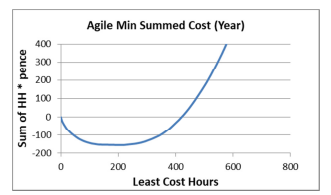
For the first 200 hours (400 HH periods) the total value is -150. If 1kW of power is taken during those particular periods then you would have earned £1.50. Continuing on, after 400 hours the cost would be neutral. The sum of the positive prices past the 200 hour point being equal to the sum of the negatively priced hours up to that point.
For the immersion heater we need a minimum of 1.2 x 365 = 438 hours of heating. Reading off the plot above, 438 hours is just about cost neutral which is some kind of a coincidence. Each unit is very nearly free. This is obviously well under our GMP of 7.6p unit so we will fulfil our entire power demand (well, maybe not as we will see later), displace all the gas used for water heating for practically no cost.
Sounds too good to be true. Is this real?
We are saving 1800 kWh at 7.6p per unit so this amounts to about £110 a year (the original cost of gas) so that isn’t a bad start. We have to pay for the more complex control equipment which will probably be an IoT device connected to the WiFi and some lines of code so it can read the day ahead prices from Agile to switch on the immersion heater. If you want to be fancy you could get it to read the changing gas tariff as well to calculate the GMP instead of having it hard coded. If you know the three lowest priced HH periods in the next 24 hours you can switch the immersion heater on for those slots. You also enter the value of GMPF depending upon how you want to operate. Maximum profit (set to 1) , neutral cost (1.6) or maximum gas saving >2.2).
Assumptions and limitations
However, it’s always the small print that gets you in the end. You may know the lowest HH periods in the next 24 hours but the problem is that HH periods are like buses. You don’t get them spaced out evenly, they tend to arrive in bunches. After a number of low cost HH slots you will have raised the temperature in the tank to a maximum of 80C and you can’t use the rest. It’s as frustrating as charging the car up one night with low rates only to find you could have done the same charge the next night with negative rates and got paid for it as well.
Damn! I would need to write (yet) another simulation to take care of the bunching. I’ve got an awful feeling that the bunching problem more or less takes us back to the fixed time scenario we had above and that only has a very simple control mechanism. It isn’t the lack of qualifying HH slots it the lack of suitably spaced qualifying HH slots. If I find the time I’ll explore this option (along the lines of you can’t have more than three heating HH slots in a day) and see if it comes out as being cost effective. It may be that the best solution is a combination of both methods. I.e. an intelligent control system looking for the cheapest slots but it’s actually spends most of its time in ‘damage limitation’ mode.
Conclusion
The timer plus switch solution above is simple and cost effective if you are on the Agile tariff. There is a trade-off between Green and Saving Money and the user can decide what is more important but you need to take account of future wholesale prices and it is worth reading the last section on the volatility of these. I decided to look at this because I bought a cheap fan heater and used it when Agile prices were near zero and it practically paid for itself in two weeks.
This is an exercise to see if running an immersion heater is at all practical and relates to the simulation. When the new boiler is fitted I’m going to run the immersion heater at different levels of GMPF (0.5, 1.0, 1.5 and 2.2) and see how the gas water heating changes in response to that. We have gas cooking as well so I’ll probably program the gas water heating outside of the times we normally use the gas hob so I can separate out the gas usage. I should be able to separate out the immersion heater usage from charging the car so I can keep a track of those costs.
Relating to tariffs, going green and costs
Keeping specifically to the issue of the viability of running immersion heaters (and any other direct heating method with a COP of 1) it is quite obvious that doing this only makes sense when using a ‘wholesale related’ tariff. You can’t save money or affordably go green (save gas) using an SVT or Fixed Price tariff. However, there are issues with wholesale related tariffs. What I’ve done here is to run the immersion heater model against the Agile tariffs for 2019 to 2023 as a comparison using the appropriate SVT prices for gas at the same time.
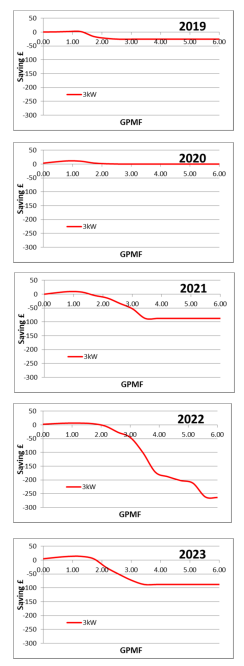
The ability to economically save gas (with direct heating) is dependent upon the relationship between the gas price and the Agile price. This was thoroughly disrupted by the energy crisis being triggered by Covid and the invasion of Ukraine. However, 2024’s results look more stable and are tending to go back towards the 2019 situation. The steady, long term trend in the fall of Agile prices continues. It would be far preferable to use heat pump water heating but the cost, compared with a simple immersion heater and timer, makes it an expensive option. As a rough calculation a heat pump water heater would cost £1,400 and it would save about £100 a year in running costs. Over 10 years that would be about £40 year. It is comparable in price but you may have problems integrating this with a gas boiler.
An immersion heater would cost £50 plus £20 for a timer but could cost £25 a year at the current rate. A total cost of £320 over 10 years and that would be £32 a year. In the worst case if Agile prices led to bigger yearly losses then you could take the option of not using the heater.
Next steps
Mid May - The immersion heater timer due to arrive and will be wired in waiting for the new tank.
28/29th May - The new Vaillant boiler / tank / immersion heater is due to be fitted. I’ll provide updates on how the immersion heating goes. Good or bad.
Breaking news …
12th May - Having looked again when we’ve had minimum prices I’ve noticed there are lower values in the late afternoon. I’m going to have to tweak the minimum HH slots finder now to include the afternoon and evening so an update on that later. Early indications are that there is a better trade off point and lower losses so looking promising.
Watch this space …


